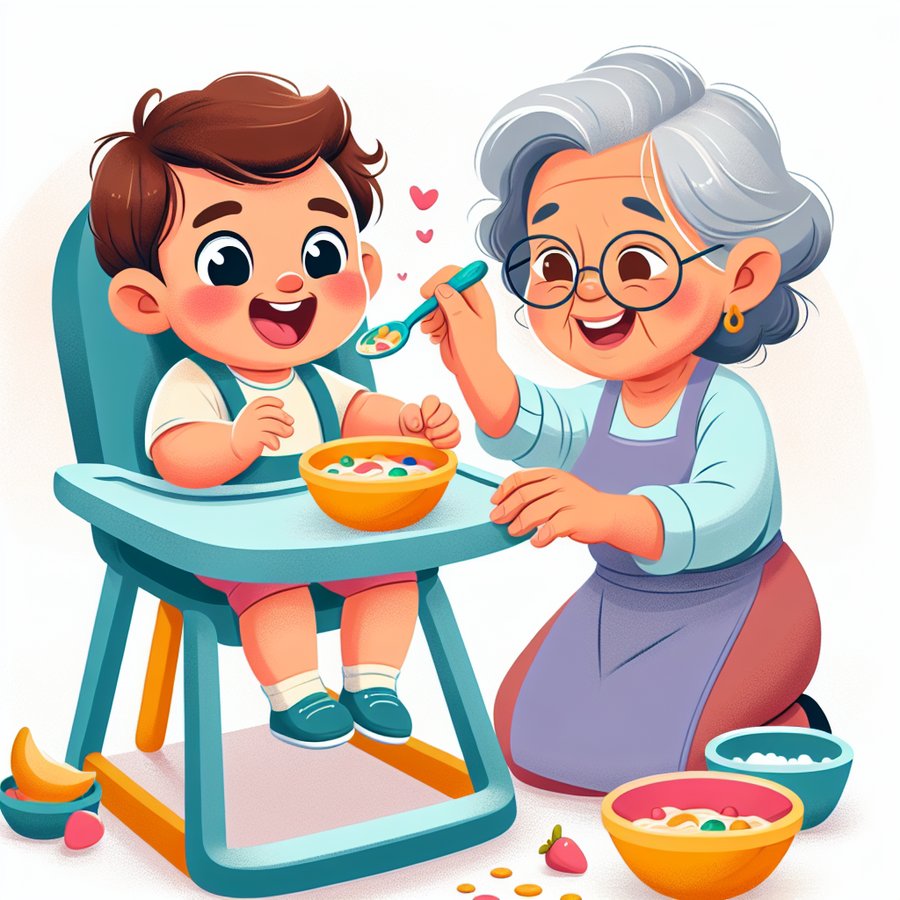Introducing your baby to self-feeding with utensils by age one is a significant milestone that paves the way for independence and fine motor skill development. This journey from hand-feeding to using spoons and forks is filled with mess, joy, and a whole lot of learning. Let’s dive into the techniques for encouraging self-feeding with utensils by age one, ensuring your little one becomes a confident and capable eater.
Understanding the Milestone: Self-Feeding Basics
Before delving into techniques, it’s crucial to understand that self-feeding is more than just a feeding milestone; it’s a developmental one. It involves a range of skills from grasping and coordination to cognitive and sensory experiences. Recognizing the signs that your baby is ready for this next step is essential. These signs include the ability to sit up with minimal support, showing interest in food, and attempting to grab food and utensils.
Starting with thick purees and soft, chunky foods can make this transition smoother. As your baby gets more comfortable, you can introduce more solid textures. Remember, every baby is unique, and the journey to self-feeding will vary. Patience and encouragement are key.
Techniques for Encouraging Self-Feeding with Utensils by Age One
Encouraging self-feeding with utensils by age one involves a blend of the right tools, opportunities, and a lot of patience. Start by choosing utensils that are baby-friendly – small, easy to grasp, and with soft tips to prevent injury. Introducing a spoon or fork during meal times, even if your baby just plays with it initially, familiarizes them with the concept of using tools to eat.
Mealtime is also learning time. Sit with your baby and eat together. Demonstrating how to use utensils can be a powerful teaching method. Babies love mimicking, and seeing you use a spoon or fork encourages them to do the same. Also, offering foods that stick easily to utensils, like thick oatmeal or cottage cheese, can make early attempts at self-feeding more successful.
Creating a Positive Mealtime Atmosphere
Creating a positive mealtime atmosphere is essential for encouraging self-feeding with utensils by age one. This means minimizing distractions, ensuring a comfortable and secure seating arrangement, and maintaining a relaxed environment. A high chair that fits well at the family table allows your baby to be part of the mealtime social experience, which is crucial for developing healthy eating habits.
Remember, the goal is to make mealtime enjoyable and stress-free. Encourage exploration and don’t worry about the mess. Celebrate small successes and be patient with the spills and misses. Consistency and a positive attitude will help your baby progress from curious onlooker to an enthusiastic self-feeder.
For more insights on nurturing your baby’s journey to self-feeding, explore our related articles on introducing solid foods, dealing with picky eaters, and nutritional needs for premature babies. Embracing these techniques for encouraging self-feeding with utensils by age one will not only foster your child’s independence but also lay the foundation for a lifetime of healthy eating habits.













